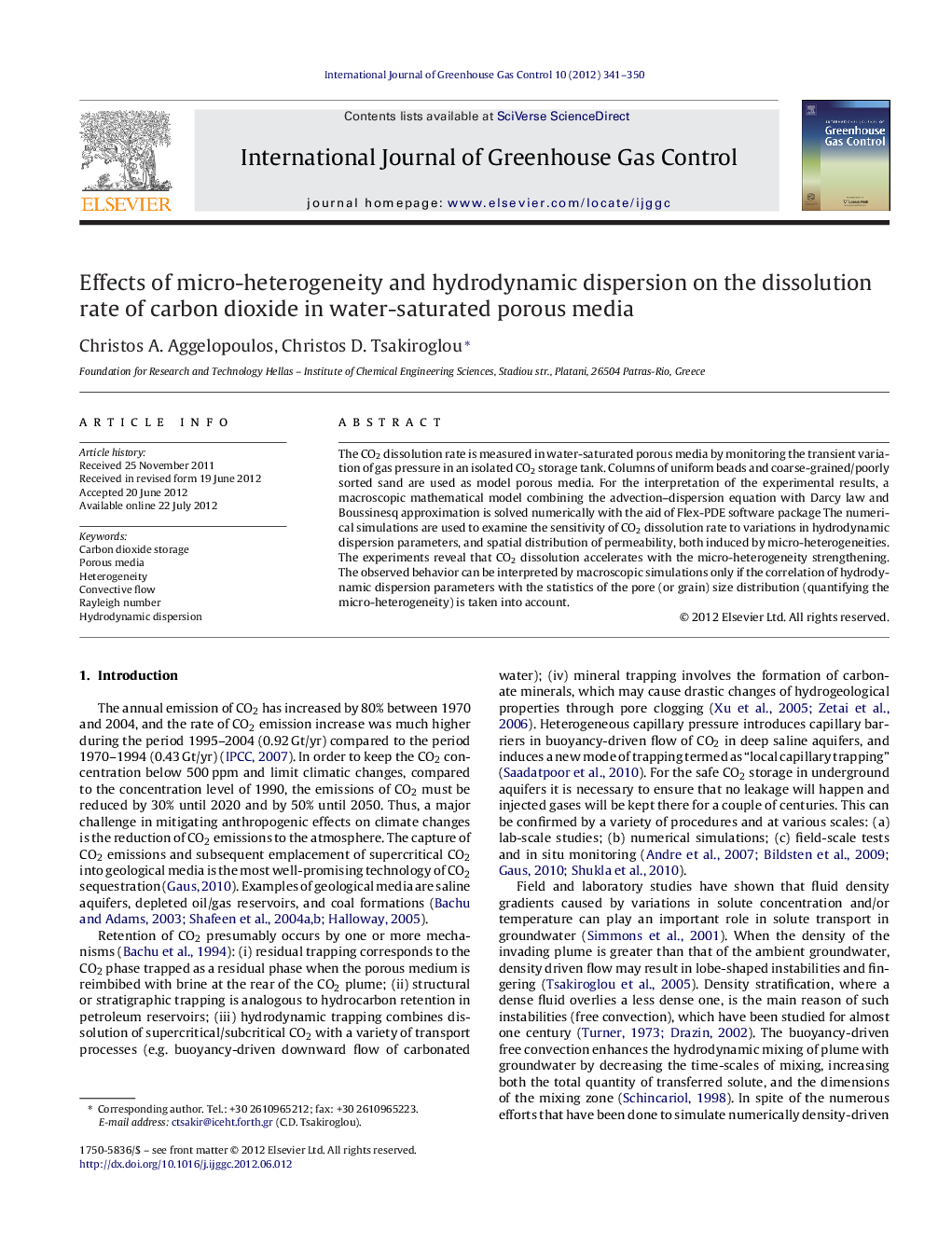| کد مقاله | کد نشریه | سال انتشار | مقاله انگلیسی | نسخه تمام متن |
|---|---|---|---|---|
| 1743311 | 1522013 | 2012 | 10 صفحه PDF | دانلود رایگان |

The CO2 dissolution rate is measured in water-saturated porous media by monitoring the transient variation of gas pressure in an isolated CO2 storage tank. Columns of uniform beads and coarse-grained/poorly sorted sand are used as model porous media. For the interpretation of the experimental results, a macroscopic mathematical model combining the advection–dispersion equation with Darcy law and Boussinesq approximation is solved numerically with the aid of Flex-PDE software package The numerical simulations are used to examine the sensitivity of CO2 dissolution rate to variations in hydrodynamic dispersion parameters, and spatial distribution of permeability, both induced by micro-heterogeneities. The experiments reveal that CO2 dissolution accelerates with the micro-heterogeneity strengthening. The observed behavior can be interpreted by macroscopic simulations only if the correlation of hydrodynamic dispersion parameters with the statistics of the pore (or grain) size distribution (quantifying the micro-heterogeneity) is taken into account.
► The CO2 dissolution rate may be measured precisely by monitoring the CO2 pressure.
► The CO2 dissolution rate in porous media depends strongly on hydrodynamic dispersion parameters.
► The CO2 dissolution rate in porous media is highly sensitive to micro-heterogeneity parameters.
► The CO2 dissolution rate increases profoundly when preferential flow paths are created.
Journal: International Journal of Greenhouse Gas Control - Volume 10, September 2012, Pages 341–350